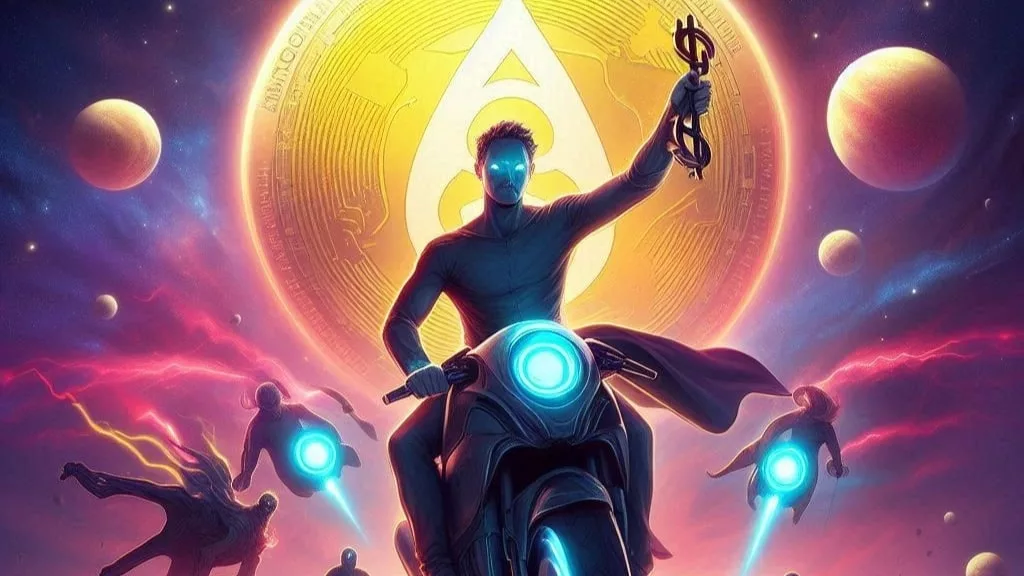
Arbitrum, a leading Ethereum Layer-2 scaling solution, has introduced a significant change to its ecosystem: users of Arbitrum Orbit chains can now pay gas fees using USDC (USD Coin). This development is aimed at reducing the volatility associated with gas fees and attracting more developers to build on Arbitrum’s technology stack. Despite this promising update, the price of ARB, Arbitrum’s native token, has experienced a steep decline, dropping by nearly 80% since its January 2024 highs.
Arbitrum Orbit Chains Embrace USDC for Gas Fees
The integration of USDC for gas fee payments on Arbitrum Orbit chains marks a pivotal moment for the Layer-2 solution. Arbitrum Orbit chains, often referred to as Layer-3 solutions, are built on top of Arbitrum’s Layer-2 technology, offering even greater scalability and customization options for developers. By allowing users to pay gas fees in USDC, Arbitrum aims to mitigate the impact of Ethereum’s inherent volatility on its users.
Ethereum gas fees, which are traditionally paid in ETH, can be highly unpredictable. During periods of network congestion, gas fees can skyrocket, making it expensive and impractical for users to interact with decentralized applications (dApps) or execute transactions. This volatility has been a significant pain point for Ethereum users, often leading to frustration and discouragement.
With USDC, a stablecoin pegged to the US dollar, Arbitrum users can now pay gas fees in a currency that maintains a consistent value, regardless of market conditions. This move is expected to provide a smoother and more predictable user experience, which could encourage more developers to build on Arbitrum’s Layer-2 and Layer-3 solutions.
Why USDC?
USDC has emerged as one of the most popular stablecoins in the cryptocurrency market, with a circulating supply of over $34.5 billion as of August 2024. Issued by Circle, USDC is primarily minted on Ethereum and its Layer-2 networks, but it also has a presence on other ecosystems like Solana and the BNB Chain.
The decision to integrate USDC for gas fee payments on Arbitrum Orbit chains is a strategic one. Given its stability and widespread adoption, USDC provides a reliable and widely accepted medium of exchange for users. Additionally, over $1.6 billion worth of USDC has already been bridged to the Arbitrum network, highlighting the strong demand for the stablecoin within the ecosystem.
By leveraging USDC, Arbitrum aims to attract a broader audience, including developers and users who may have been hesitant to engage with Ethereum’s Layer-2 solutions due to the volatility of ETH. This integration could potentially lower the barrier to entry for new projects and users, driving further adoption of Arbitrum’s technology.
The Decline of ARB: Understanding the 80% Drop
Despite the positive news surrounding the integration of USDC for gas fees, ARB, the native token of Arbitrum, has been on a downward trajectory. Since reaching its peak in January 2024, ARB has lost nearly 80% of its value. This sharp decline has raised concerns among investors and stakeholders, prompting questions about the underlying factors driving the token’s price down.
Market Sentiment and Macro Trends
One of the primary reasons behind ARB’s decline is the broader bearish sentiment in the cryptocurrency market. Since the beginning of 2024, the market has experienced significant volatility, with many assets, including major cryptocurrencies like Bitcoin and Ethereum, facing substantial price corrections. ARB, being a relatively new and less established token, has been particularly vulnerable to these macroeconomic trends.
Additionally, the regulatory environment surrounding cryptocurrencies has become increasingly uncertain, with several countries introducing stricter regulations on digital assets. This uncertainty has contributed to a general sense of caution among investors, leading to reduced demand for speculative tokens like ARB.
Competition from Other Layer-2 Solutions
Another factor contributing to ARB’s decline is the growing competition within the Layer-2 scaling solution space. While Arbitrum has been a frontrunner in this domain, other Layer-2 networks, such as Optimism, zkSync, and StarkNet, have also gained traction, offering similar benefits of reduced gas fees and faster transaction speeds.
The rise of these competing networks has diluted the market share for Arbitrum, leading to increased pressure on ARB’s price. Investors may be diversifying their portfolios to include other Layer-2 tokens, which could be contributing to the sell-off of ARB.
Profit-Taking and Speculative Trading
The sharp rise in ARB’s price during its early days led to significant profits for early investors. As the token reached new highs, many of these investors likely took profits, leading to selling pressure that drove the price down. In the highly speculative world of cryptocurrency trading, such profit-taking is common, especially when a token has experienced rapid price appreciation.
Moreover, the volatility of ARB has attracted short-term traders looking to capitalize on price fluctuations. This speculative trading activity can exacerbate price swings, leading to increased volatility and further declines in the token’s value.
The Future of ARB: Can It Recover?
While the current outlook for ARB may seem bleak, it’s important to consider the potential for recovery. The integration of USDC for gas fee payments on Arbitrum Orbit chains is a positive development that could drive greater adoption of the network. As more developers and users flock to Arbitrum, the demand for ARB could increase, potentially leading to a price recovery.
Furthermore, the broader cryptocurrency market is cyclical, and while the current downturn may persist in the short term, a future market recovery could lift ARB along with other digital assets. However, for ARB to regain its previous highs, it will need to demonstrate sustained growth in user adoption, network activity, and developer interest.
Conclusion
Arbitrum’s decision to allow USDC for gas fee payments on its Orbit chains is a significant step toward improving the user experience and attracting more developers to its ecosystem. This integration offers a stable and predictable alternative to paying gas fees in volatile ETH, which could lower the barrier to entry for new users.
Despite this positive development, ARB has faced a steep decline, losing nearly 80% of its value since January 2024. This drop can be attributed to broader market trends, increased competition, and profit-taking by early investors. However, with continued innovation and adoption, there is potential for ARB to recover in the future. Investors should remain cautious and consider the long-term prospects of Arbitrum’s ecosystem as they navigate the volatile cryptocurrency market.

Get the latest Crypto & Blockchain News in your inbox.